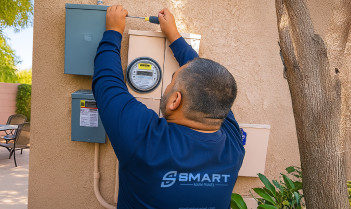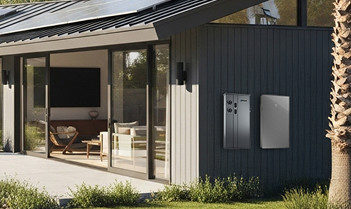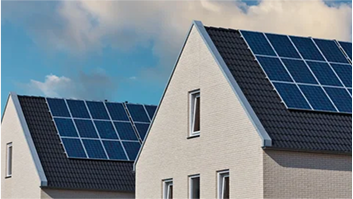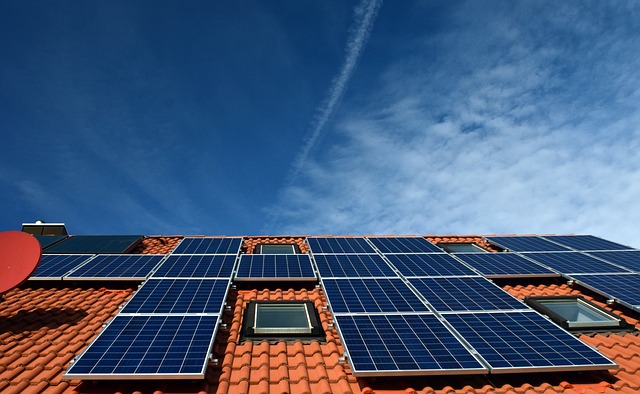
Date
Understanding the Impact of Microinverter Clipping on Solar Panel Performance
Understanding the Impact of Microinverter Clipping on Solar Panel Performance
The performance of solar panels is impacted by a phenomenon known as microinverter clipping. In this article, we will examine what microinverter clipping is, how it affects solar panel performance, how to measure and mitigate it, and future trends in microinverter technology. The following are the main lessons to be learned from this article:
Key Takeaways
- Microinverter clipping occurs when the power output of a solar panel is limited by the maximum voltage or current that the microinverter can handle.
- Clipping might cause the solar panel system to produce less energy and operate less efficiently.
- Measuring microinverter clipping involves analyzing voltage and current measurements, as well as analyzing the power output.
- To mitigate microinverter clipping, it is important to optimize the system design, choose the right microinverters, implement oversizing techniques, and have a monitoring and maintenance strategy in place.
- The development of clipping detection algorithms, integration with energy storage systems, increased efficiency and power density, and interaction with smart grids are some of the future trends in microinverter technology.
What is Microinverter Clipping?

How Microinverters Work
Microinverters are small electronic devices that are installed on each individual solar panel in a solar power system. They convert the direct current (DC) generated by the solar panel into alternating current (AC) that can be used to power electrical devices. Unlike traditional string inverters, which are connected to multiple solar panels, microinverters operate independently, allowing each panel to perform at its maximum potential.
Microinverters use advanced power electronics to optimize the performance of each solar panel. They constantly monitor the output of the panel and adjust the voltage and current to ensure maximum power output. Through optimization at the individual panel level, the total efficiency of the solar power system is increased, and the effects of shadowing and other variables that could compromise the performance of a single panel are minimized.
Important safety features that microinverters offer include built-in isolation transformers that guard against ground faults and electrical shocks, ensuring the security of the solar panel system and the personnel operating on it.
All things considered, microinverters are essential to maximizing the efficiency and security of solar panel systems.
Understanding Clipping in Solar Panels
Clipping in solar panels refers to the phenomenon where the output power of the solar panel is limited due to the maximum power rating of the microinverter being exceeded. This occurs when the solar panel generates more power than the microinverter can handle, resulting in a reduction in the overall energy production.
Clipping can occur in situations where the solar panel is exposed to high levels of sunlight or when the system is operating at its maximum capacity. It is important to understand and address clipping as it can have a significant impact on the performance and efficiency of the solar panel system.
Measuring and analyzing the solar panel’s voltage and current output is crucial to comprehending the effects of clipping. By keeping an eye on the power output, one can determine the degree of clipping and how it affects the total amount of energy produced.
In order to mitigate clipping, it is important to optimize the system design and choose the right microinverters. Implementing oversizing techniques can also help reduce the occurrence of clipping and maximize the energy production.
Tip: Regular monitoring and maintenance of the solar panel system can help identify and address any clipping issues, ensuring optimal performance and efficiency.
Causes of Microinverter Clipping
Microinverter clipping can be caused by several factors, including:
- Oversized Solar Panels: When the power output of a solar panel exceeds the maximum input capacity of the microinverter, clipping can occur. This is more likely to happen when using larger, high-efficiency solar panels.
- Shading and Obstructions: Shading or obstructions on the solar panel can cause uneven power generation, leading to clipping. It is important to ensure that the solar panels are installed in a location with minimal shading.
- Temperature: High temperatures can increase the likelihood of microinverter clipping. As the temperature rises, the efficiency of the solar panels decreases, resulting in a higher chance of clipping.
- Mismatched Components: Using incompatible or mismatched components in the solar panel system can also contribute to clipping. Making sure that every part, including the microinverter, is appropriately matched and compatible with the others is essential.
Tip: To minimize the risk of microinverter clipping, it is recommended to carefully design the solar panel system, consider the size and efficiency of the solar panels, avoid shading and obstructions, monitor temperature levels, and use compatible components.
Effects of Microinverter Clipping on Solar Panel Performance
Microinverter clipping can have a significant impact on the performance of solar panels. When a microinverter clips, it means that the maximum power output of the solar panel is being limited. This can occur when the DC voltage from the solar panel exceeds the maximum input voltage of the microinverter. As a result, the excess power is lost and the overall energy production of the solar panel is reduced.
Measuring Microinverter Clipping
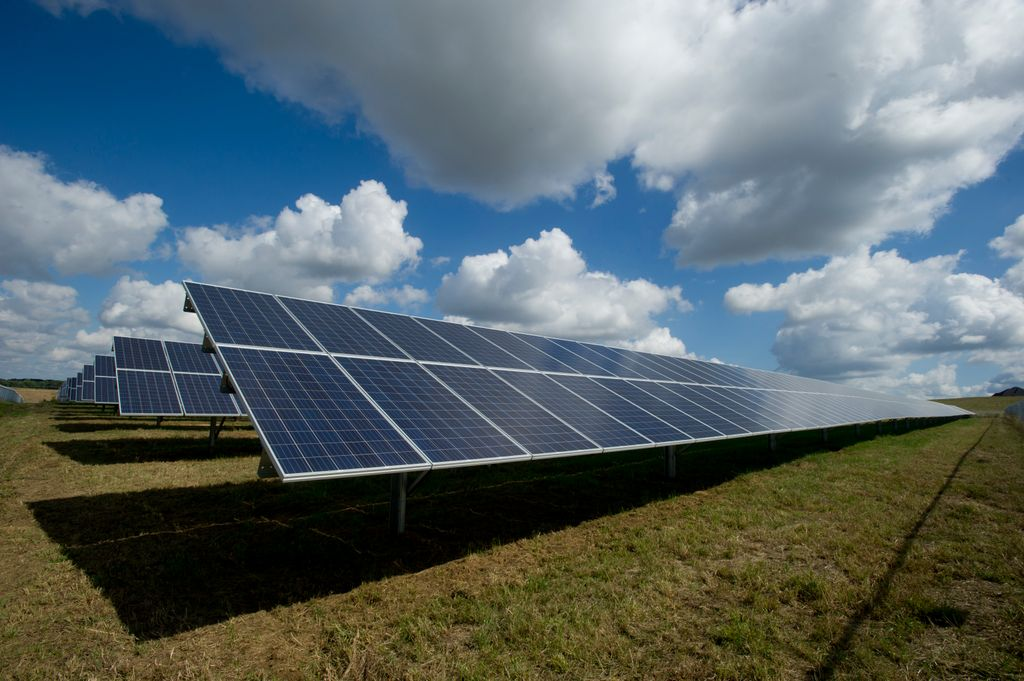
Voltage and Current Measurements
When measuring the voltage and current of a solar panel system, it is important to ensure accurate and reliable readings. With specialist tools like a multimeter or a data recorder, this is possible.
To measure the voltage, connect the positive lead of the multimeter to the positive terminal of the solar panel and the negative lead to the negative terminal. The multimeter will display the voltage output of the panel.
For current measurements, the multimeter can be connected in series with the solar panel. This involves breaking the circuit and inserting the multimeter between the positive terminal of the panel and the positive terminal of the inverter. The multimeter will then display the current flowing through the circuit.
It is important to note that when measuring the voltage and current, it is recommended to take multiple readings at different times of the day to account for variations in sunlight intensity and temperature.
Power Output Analysis
An essential first step in comprehending how microinverter clipping affects solar panel performance is power output analysis. This involves measuring the voltage and current output of the panels to ascertain the power generated, and it also helps identify any clipping events where the microinverter’s maximum power capacity limits the power output.
To conduct a power output analysis, the voltage and current measurements are recorded at regular intervals. These readings can be used to determine the solar panels’ instantaneous power output. Patterns of clipping, such as the frequency and length of clipping episodes, can be found by examining the power output data.
It is important to note that temperature can also impact microinverter clipping. Higher temperatures can lead to increased clipping, as the microinverter may reach its maximum power capacity more frequently. Therefore, temperature monitoring and analysis should be included in the power output analysis to gain a comprehensive understanding of the impact of microinverter clipping on solar panel performance.
In conclusion, power output analysis is a useful technique for determining how microinverter clipping affects solar panel performance. Patterns of clipping may be found and the influence of temperature on clipping can be assessed by examining voltage and current measurements.
Impact of Temperature on Clipping
Temperature has a significant impact on microinverter clipping. As the temperature of the solar panels increases, the efficiency of the microinverters decreases, leading to a higher likelihood of clipping. This is because the increase in temperature causes the voltage and current output of the solar panels to decrease, resulting in a reduced power output. It is important to consider the temperature conditions when designing a solar panel system to minimize the effects of clipping.
Analyzing Clipping Patterns
When analyzing clipping patterns in solar panels, it is important to consider both the frequency and duration of the clipping events. This data can help detect any possible problems and offer insights into the system’s general performance.
One way to analyze clipping patterns is by examining the power output data. By comparing the expected power output with the actual power output, it is possible to identify periods of clipping. These periods can then be further analyzed to determine the causes and potential solutions.
Table 1 provides an example of a power output analysis for a solar panel system. The table shows the expected power output, actual power output, and the percentage of clipping for each day over a one-week period.
Tip: Monitoring the clipping patterns regularly can help optimize the system design and identify any necessary adjustments or maintenance needs.
| Day | Expected Power Output (kWh) | Actual Power Output (kWh) | Clipping Percentage |
|---|---|---|---|
| 1 | 50 | 48 | 4% |
| 2 | 45 | 40 | 11% |
| 3 | 55 | 52 | 5% |
| 4 | 60 | 55 | 8% |
| 5 | 50 | 45 | 10% |
| 6 | 40 | 38 | 5% |
| 7 | 45 | 42 | 7% |
Mitigating Microinverter Clipping
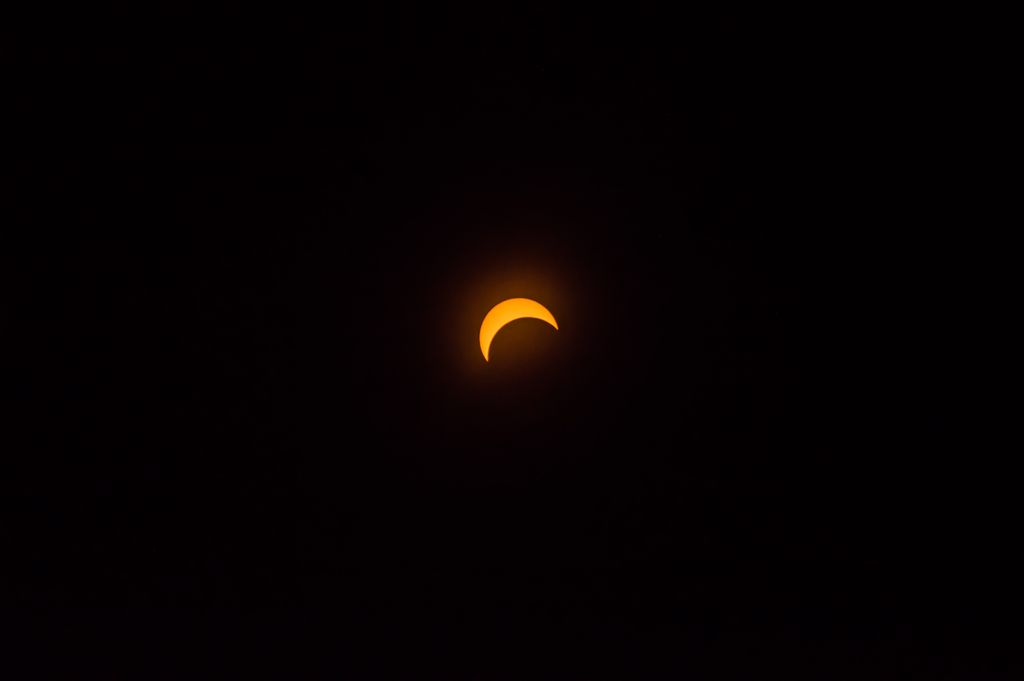
Optimizing System Design
When designing a solar panel system, it is important to consider various factors to optimize its performance. One key aspect is the selection of the right microinverters. Choosing microinverters that are compatible with the specific solar panels being used can greatly improve the overall efficiency of the system. Additionally, considering the power rating and voltage range of the microinverters is crucial to ensure they can handle the maximum power output of the panels without clipping.
Another important factor to consider is the wiring configuration of the system. Implementing a series or parallel wiring arrangement can impact the performance of the microinverters and minimize the effects of clipping. Series wiring can increase the voltage output, while parallel wiring can increase the current output.
Furthermore, optimizing the tilt and orientation of the solar panels can maximize their exposure to sunlight and reduce the likelihood of clipping. Through tilt angle adjustment and sun-facing panel alignment, the system may maximize power output while reducing losses from shade and obstructions.
Choosing the Right Microinverters
When selecting microinverters for your solar panel system, there are several factors to consider. Efficiency is a key consideration, as higher efficiency microinverters can maximize the power output of your panels. It is also important to choose microinverters that are compatible with your specific panel type and configuration. Reliability is another crucial factor, as you want microinverters that will perform consistently and withstand the elements over time. Additionally, consider the warranty offered by the manufacturer, as this can provide peace of mind and protection for your investment. Finally, price is a factor to consider, as microinverters can vary in cost. Striking a balance between cost and quality is crucial.
Implementing Oversizing Techniques
Implementing oversizing techniques is a common strategy to mitigate the impact of microinverter clipping on solar panel performance. Oversizing refers to installing a larger capacity of solar panels than what is required to meet the average energy demand. This allows the system to generate more power during periods of optimal sunlight, compensating for the power loss due to clipping. Oversizing the system can lead to higher energy yields and better system performance by increasing overall energy production.
Monitoring and Maintenance Strategies
When it comes to monitoring and maintaining a solar panel system with microinverters, there are several important strategies to consider:
- Regular Inspections: Conduct regular inspections of the system to identify any potential issues or abnormalities. This can include checking for loose connections, damaged cables, or any signs of wear and tear.
- Performance Monitoring: Utilize monitoring software or tools to track the performance of the system. This can help identify any performance degradation or issues with individual microinverters.
- Firmware Updates: Stay up to date with the latest firmware updates for the microinverters. Performance enhancements and bug fixes are frequently included in these releases.
- Cleaning and Maintenance: Keep the solar panels clean and free from debris to ensure optimal performance. Regularly inspect and clean the panels to remove any dirt, dust, or other obstructions.
- Professional Maintenance: Consider hiring a professional maintenance service to perform regular maintenance and inspections. They can provide expertise and ensure the system is operating at its best.
Recall that increasing the efficiency and lifetime of a solar panel system with microinverters requires regular monitoring and maintenance.
Future Trends in Microinverter Technology
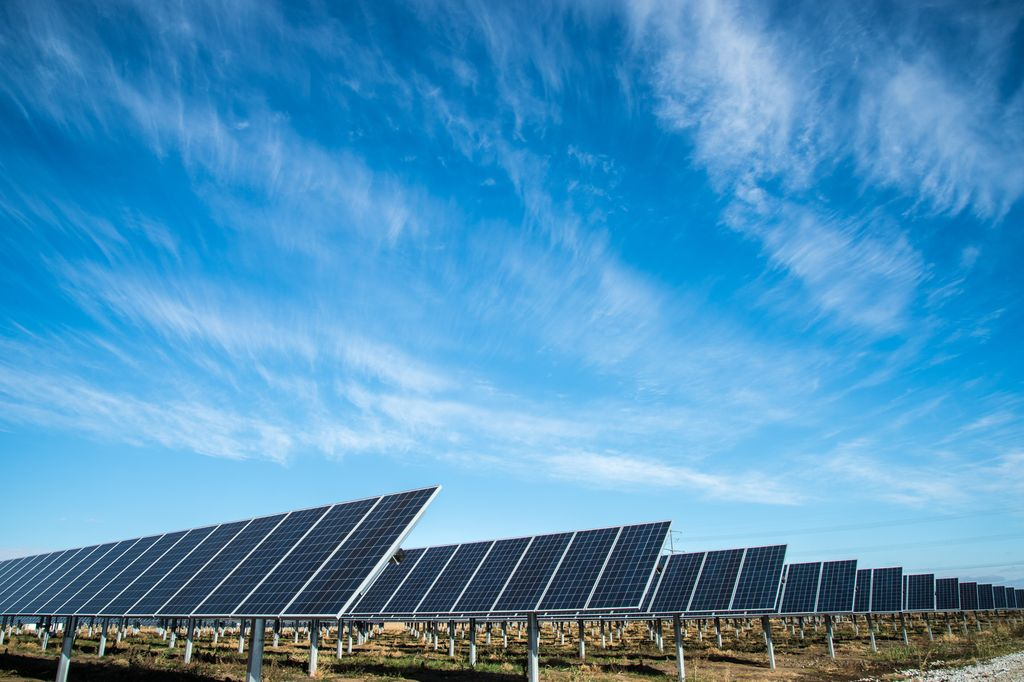
Advancements in Clipping Detection Algorithms
Modern clipping detection algorithms leverage advanced techniques to analyze voltage and current measurements, allowing for real-time detection of clipping events. By precisely identifying and quantifying clipping, system owners and operators can take appropriate action to maximize energy production and optimize system performance. These algorithms have significantly improved the accuracy and efficiency of identifying instances of microinverter clipping in solar panel systems.
Integration with Energy Storage Systems
Integration with energy storage systems is a key consideration for maximizing the benefits of microinverters. Energy storage systems can also be used to ensure a continuous supply of electricity in the event of a grid outage. By combining microinverters with energy storage, owners of solar panels can store excess energy generated during the day and use it during periods of low sunlight or high energy demand. This helps to increase self-consumption and reduce reliance on the grid.
The right size and configuration of the energy storage system is essential to guarantee optimal performance and maximize the return on investment. Battery capacity, charging and discharging rates, and system compatibility are some of the factors that must be taken into account in order to successfully integrate microinverters with energy storage systems.
In conclusion, there are a number of benefits to combining microinverters with energy storage systems, such as higher self-consumption, decreased reliance on the grid, and backup power capabilities.
Enhanced Efficiency and Power Density
Enhanced efficiency and power density are key considerations in the development of microinverter technology. By improving the efficiency of the conversion process and increasing the power density of the microinverters, solar panel systems can generate more electricity from the same amount of sunlight. This leads to higher energy production and greater cost savings for solar panel owners.
Smart Grid Integration
Microinverter technology is not complete without smart grid integration. Bidirectional energy flow and efficient energy management are made possible by connecting solar panels to the power grid. Advanced features like demand response, grid optimization, and real-time monitoring are made possible by integration with the smart grid. One of the main advantages of smart grid integration is the capacity to maximize solar energy self-consumption. By cleverly controlling the flow of electricity, homeowners can use more of the energy generated by their solar panels, reducing reliance on the grid and lowering electricity bills.
In addition, smart grid integration enables grid stability by providing a decentralized and distributed energy generation system. In order to fully reap the rewards of smart grid integration, microinverters and the grid infrastructure must be compatible, which calls for following industry standards and regulations as well as appropriate system design and installation. This lessens the load on the power grid and increases overall reliability.
Future Trends in Microinverter Technology
Microinverters are becoming increasingly popular in the solar industry due to their numerous advantages over traditional string inverters. These small, individual inverters are installed on each solar panel, allowing for greater flexibility and efficiency in energy production. Microinverter technology has a bright future ahead of it thanks to advancements in technology. One of the most notable trends in microinverter technology is the incorporation of smart features. These features allow homeowners to track and maximize their solar energy production with ease, and they also facilitate remote monitoring and troubleshooting, which makes it simpler for installers to find and fix problems.
Another trend in microinverter technology is the improvement in power density. Manufacturers are constantly working on developing microinverters that can handle higher power outputs while maintaining a compact size. This allows for more efficient use of space and greater energy production.
Furthermore, microinverters are becoming more reliable and durable. With advancements in materials and design, microinverters are now able to withstand harsh weather conditions and have a longer lifespan.
In conclusion, the future of microinverter technology is bright, as microinverters are poised to revolutionize the solar industry with the integration of smart features, improved power density, and increased reliability. To find out more about the latest developments in microinverter technology and how it can benefit your home, visit our website Smart Main Panel. This increased reliability guarantees that homeowners can take advantage of solar energy for many years to come.
Conclusion
In summary, the phenomenon of microinverter clipping can have a notable impact on the performance of solar panels, potentially resulting in a decrease in energy production and overall efficiency. Therefore, it is imperative that solar panel owners and installers take appropriate measures to mitigate its effects. By comprehending the causes and consequences of microinverter clipping, we can optimize solar panel systems and maximize their output. The optimal performance and long-term sustainability of solar energy systems are largely dependent on the efficient use of microinverters and proper system design.
Frequently Asked Questions
What is microinverter clipping?
Microinverter clipping refers to the phenomenon where a microinverter limits the power output of a solar panel due to high voltage or current levels. It occurs when the input power exceeds the maximum capacity of the microinverter, resulting in a reduction in the overall energy production of the solar panel system.
How do microinverters work?
Microinverters are devices that convert the DC power generated by individual solar panels into AC power. They are installed on each panel and perform the function of a traditional central inverter, but on a smaller scale. Microinverters optimize the performance of each panel independently, allowing for better energy production and monitoring capabilities.
What causes microinverter clipping?
Microinverter clipping can be caused by various factors, including high solar irradiance, low panel temperatures, mismatched panel configurations, and system design limitations. Additionally, shading, dust, or debris on the solar panels can also contribute to clipping by reducing the overall power output.
What are the effects of microinverter clipping on solar panel performance?
Microinverter clipping can lead to a decrease in the overall energy production of a solar panel system. In addition to shortening the lifespan of the microinverters and solar panels, clipping can also result in reduced energy yields, decreased system efficiency, and a worse return on investment.
How can microinverter clipping be measured?
Microinverter clipping can be measured through voltage and current measurements at the panel level. In addition to identifying clipping events, power output analysis can also be used to evaluate the effects of temperature on clipping, and clipping patterns can be monitored to determine the frequency and length of clipping occurrences.
What are some strategies to mitigate microinverter clipping?
Optimizing the system design to take into account elements like panel configuration, tilt angle, and shading can help minimize microinverter clipping. Selecting microinverters that are capable of handling higher power capacities can also help reduce clipping. Oversizing techniques—in which the microinverters’ capacity exceeds the panel’s capacity—can further minimize clipping. Regular system maintenance and monitoring can also help identify and resolve clipping issues.
Meta Description Examine how microinverter clipping affects solar panel performance.

